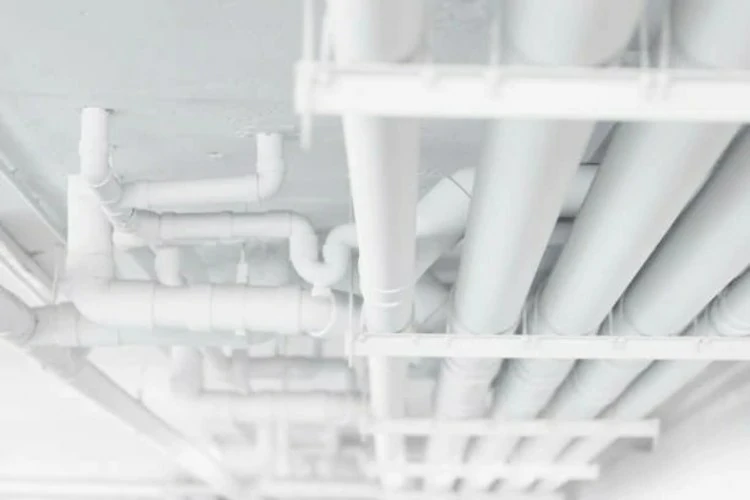Introduction
When it comes to plumbing materials, the choices can be overwhelming. PVC (Polyvinyl Chloride) has risen to prominence as a versatile and cost-effective option, but how does it stack up against other plumbing materials? In this article, we’ll conduct a comparative analysis of PVC plumbing against traditional materials, exploring the strengths and considerations that make PVC a standout choice in the construction industry.

1. PVC vs. Copper: Material Composition and Cost Efficiency
1.1 Material Composition of PVC and Copper Pipes
PVC and copper are two commonly used materials in plumbing, each with distinct properties. PVC, a synthetic polymer, is known for its lightweight nature and resistance to corrosion. Copper, a metal, offers durability and a long history of use in plumbing due to its ability to resist bacterial growth and corrosion.
1.2 Cost Efficiency of PVC Plumbing
One of the primary considerations in any construction project is cost. PVC plumbing stands out for its cost efficiency when compared to copper. PVC pipes are generally more affordable, making them an attractive option for budget-conscious projects. The cost savings extend beyond the material itself, as PVC’s lightweight nature contributes to easier transportation and installation, reducing labor costs.
1.3 Corrosion Resistance: PVC’s Advantage over Copper
Corrosion can be a significant concern in plumbing systems, especially in areas with aggressive water conditions. PVC’s resistance to corrosion is a notable advantage over copper. While copper pipes may corrode over time, PVC pipes maintain their structural integrity, ensuring a longer lifespan and reducing the need for maintenance or replacements.
2. PVC vs. PEX: Flexibility, Installation, and Longevity
2.1 PVC vs. PEX: The Flexibility Factor
Another contender in the plumbing material landscape is PEX (Cross-linked Polyethylene). While both PVC and PEX are known for their flexibility, PEX has a distinct advantage in this regard. PEX pipes are highly flexible and can bend around corners without the need for additional fittings. However, PVC’s flexibility is still notable, especially in comparison to more rigid materials like metal pipes.
2.2 Ease of Installation: PVC’s Versatility Shines
When it comes to installation, PVC plumbing offers versatility and simplicity. PVC pipes are easy to cut, join, and install, making them a preferred choice for both DIY enthusiasts and professional plumbers. The ease of installation contributes to project efficiency and cost-effectiveness, as less time and labor are required to set up a plumbing system compared to more complex materials.
2.3 Longevity and Durability: A Balanced Approach
While both PVC and PEX offer excellent durability, the longevity of PVC plumbing is well-established. PVC pipes have a track record of withstanding the test of time and various environmental conditions. Their resistance to chemical degradation and external factors contributes to a reliable plumbing system that can endure for decades, providing peace of mind for property owners.
3. PVC vs. Galvanized Steel: Rust Resistance and Environmental Impact
3.1 Rust Resistance: PVC’s Clear Advantage
Galvanized steel has been a traditional choice for plumbing, but its susceptibility to rust is a significant drawback. PVC plumbing, on the other hand, is entirely resistant to rust and corrosion. This resistance ensures that water quality remains uncontaminated, addressing a common concern associated with aging galvanized steel pipes.
3.2 Environmental Impact: PVC’s Sustainable Attributes
As sustainability gains prominence in construction practices, the environmental impact of plumbing materials becomes a crucial consideration. PVC plumbing demonstrates sustainability through its recyclability. PVC pipes can be recycled, contributing to a more eco-friendly construction industry and aligning with the principles of a circular economy.
3.3 Factors Influencing Material Choice
The choice between PVC, copper, PEX, or galvanized steel ultimately depends on specific project requirements, budget constraints, and the intended application. PVC plumbing, with its balance of cost efficiency, corrosion resistance, ease of installation, and recyclability, offers a compelling choice for a wide range of construction projects.
Conclusion
In the realm of plumbing materials, the comparative analysis between PVC and other options reveals the unique strengths and considerations associated with each. While copper, PEX, and galvanized steel have their merits, PVC plumbing stands out for its cost efficiency, corrosion resistance, ease of installation, flexibility, and sustainability. The choice of plumbing material should be guided by project requirements, and with its versatile attributes, PVC emerges as a frontrunner in meeting the diverse needs of construction projects.
Contact:
IFAN is a manufacturer with 30 years of experience, specializing in plastic pipes, fitting, and valves in China. If you are interested in IFAN’s copper valves, PPR valves, pipe, and fitting, feel free to contact us. IFAN provides various standard pipes to meet your specific needs. Click the link below to explore IFAN’s diverse, cost-effective valve products, as well as related pipeline system products.
We will reply your email or fax within 24 hours.
You can call us at any time if there is any question on our production.
For more information,pls visit our webside https://www.ifanplus.com/
Pls Mailto: [email protected]






